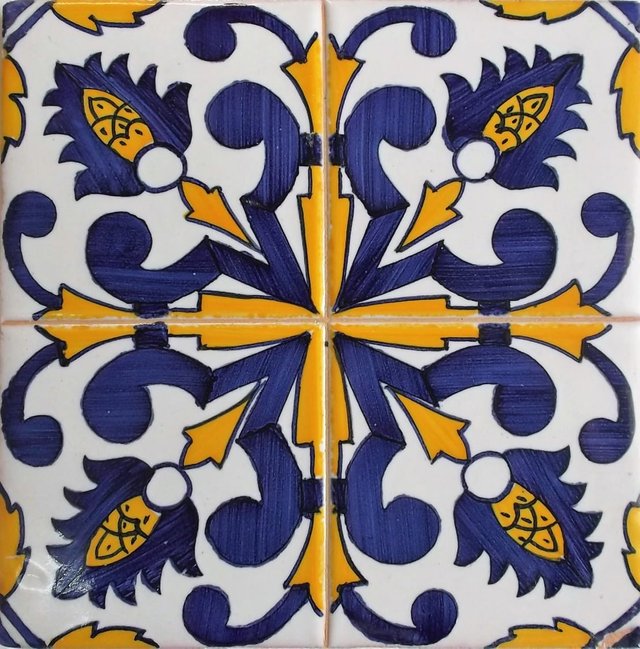After that they are fired in a special oven ... a process that produces great durability. The tiles attract attention both for the geometric patterns they represent and for their paintings that include scenes of country and marine life. Some tiles represent narratives from ancient mythology.
In many parts of Portugal you cannot go far without encountering tiles. They often appear as inscriptions identifying the streets. Rua Alegre is an example here in Lisbon. A rectangular plate of six tiles placed on one wall gives the name of the street. The two words appear in the center of the plate, one above the other in elegant blue letters on a white background. Around the outer edges of the rectangle, forming a frame, is a cheerful gold-colored pattern intertwined with green leaves. The upper corners are adorned with two pink flowers.
Tiles are also used as door plates with the owner's name or house number. Residences, both new and old, have decorative tile siding. It is common to see in the villages near Lisbon on an outer wall of whitewashed houses an image of the house owner's favorite “saint”, made of tiles. The tiles are also used inside the houses. One sees them as cladding for French fireplaces, on shelves for vases, or as frames for mirrors and pictures.
The tiles of Portugal have an ancient history. The name itself can be significant. Although some say they have determined that its origin is blue, others suggest that the Portuguese word derived from an Arabic verb, zallaga, which means "to be smooth, slippery". In the fourteenth century Portugal imported artistic and colorful tiles from Andalusia, Spain, where there was a strong Moorish or Arabic influence in both art and language. Tiles from that period can still be seen both outside and inside religious buildings in the cities of Córdoba and Seville. Decorated in green, white, blue, black and cream colors, they present complex drawings of polygon and star shapes, typical of the Hispano-Moorish style.
But Spain is not the only source of tiles. Much of this decorative glazed brick work features oriental drawings reminiscent of China. Centuries ago Portuguese explorers traded in the Canton Delta. Impressed by the beauty of the delicate Chinese porcelain, the explorers brought much of it to Lisbon. The Chinese liked to use blue on white to decorate porcelain, a color combination that one frequently sees in tiles here in Portugal.
During the seventeenth century the Dutch made an excellent imitation of the Chinese product. Portugal was quick to import from the Dutch, too. So our tiles, while a monument to Portuguese artistic ability, have an ancient history that incorporates artistic features from other countries.

No tenía idea de la historia tras los azulejos, gracias por compartir.
Saludos
Downvoting a post can decrease pending rewards and make it less visible. Common reasons:
Submit